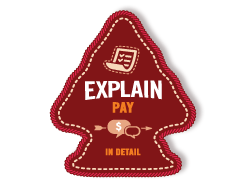
Three years is a long time, right?
Not if it’s the three years you have to get ready for CRM2, Bill Donegan, chief compliance officer at Scotia Securities Inc., said during a panel at IFIC’s Operations Day 2013 in Toronto.
Read: Worried about CRM2? Prep with our new CE course
Donegan broke down the main challenges dealers face and how to tackle them.
Year 1
We’re about halfway through CRM2’s first year, and Donegan says top priorities should be planning, developing business requirements, and budgeting.
Planning: This involves doing a thorough “gap analysis,” where compliance and legal identify what you’re doing now and what you need to do to close the gap.
Requirements: Make sure service providers have detailed documents explaining new requirements, including formulas for performance reporting.
Budgeting: “I don’t know how much [CRM2] is going to cost […], but I know it’s going to be a big number,” says Donegan.
On the dealer level, CRM2’s main impact in year one will be disclosure. “A lot of dealers already have good disclosure around charges, but the framework [of CRM2] is around operating charges and transaction charges,” Donegan explains.
Read: Investors can gain by doing nothing
The new requirements also include disclosing trailing commissions and giving 60 days’ notice of new or increased charges.
Benchmark disclosure is another requirement. “This comes into force next July, but you need to start working on that in year one,” says Donegan. “They’re looking for something fairly simple, explaining how benchmarks might be used. That disclosure has to go in [the] RDD [Relationship Disclosure Document]. You also need to decide if it’s a material change; if so, you’ll probably need to redeliver the RDD to existing clients.” His firm’s decided to redeliver the RDD with the quarterly statement.
Year 2
The big issue in year two is how dealers are going to disclose costs as of July 2015. They need to decide whether to use book cost or original cost, notes Donegan.
“Most of the dealers I’ve heard from are saying book cost, and a lot of that is driven by the information they have available in their systems.”
Read: How to frame fees
Another concern for year two is the inception date for cost reporting. Donegan notes that in this case as well the date you choose will largely be determined by the quality of information in your system.
“You need to ensure in year two that you have everything ready to collect the information you’re going to need in year three to deliver the annual cost and performance reports,” Donegan adds.
Year 3
Trade confirmation cost disclosure is required as of July 2016, which means itemizing and describing the various elements of each transaction, instead of simply giving the total.
It will also be time for annual cost and performance reports. Donegan notes CSA provides a mock up (see pages 148-51 here) that can help you design your reports.
Read: Fee-for-advice model lacks transparency: IFIC
You also need to think about whether you want these reports to be separate from or integrated with the account statement. “You have the option to mail [the cost and performance reports] as a stand-alone document, as long as it’s mailed within ten days of a quarterly statement. I don’t know if anyone will do that because you’d be doubling up on postage,” Donegan says.
His parting words for advisors: clients will pelt you with questions when they get these new reports. They’ll want to know how trailing commissions are calculated and what you’ve done to earn them—among other things—so be ready.
Read: Will the commission debate affect advisor business valuations?